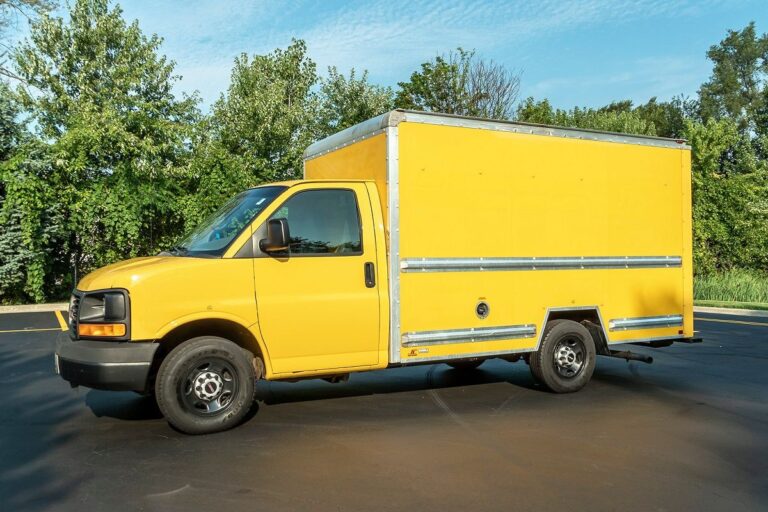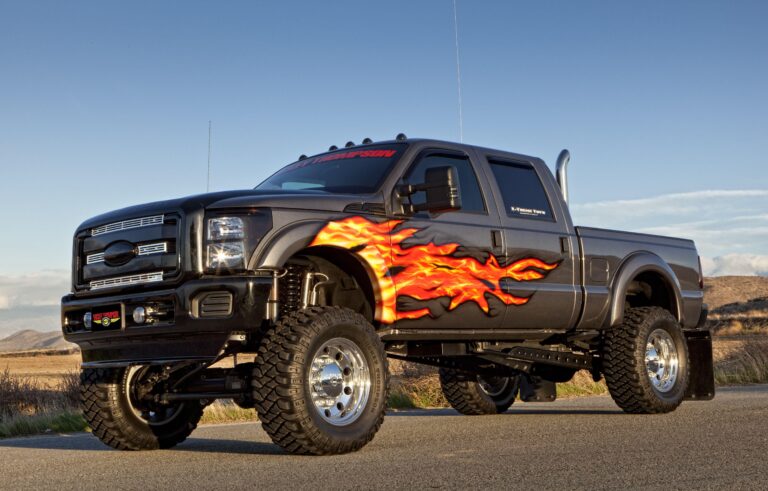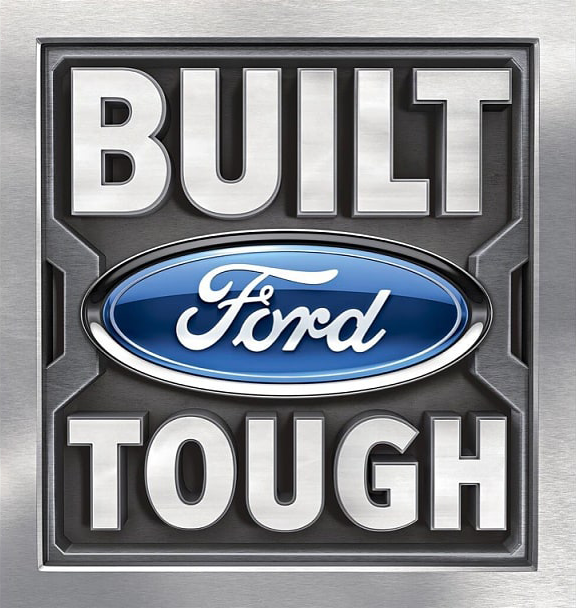2nd Gen Dodge Trucks For Sale: A Comprehensive Buyer’s Guide
2nd Gen Dodge Trucks For Sale: A Comprehensive Buyer’s Guide cars.truckstrend.com
The rumble of a Cummins diesel, the commanding presence of a "big rig" front end, and an undeniable reputation for rugged dependability – these are the hallmarks of the 2nd Generation Dodge Ram. Produced from 1994 to 2002, these trucks redefined the pickup market, offering a bold design and powerful engine options that captured the hearts of enthusiasts and working professionals alike. Today, nearly two decades after their last production year, 2nd Gen Dodge trucks remain incredibly sought after in the used market. They represent a sweet spot of classic styling, mechanical simplicity (especially the early diesels), and serious capability, making them an excellent choice for those seeking a durable workhorse, a formidable off-road rig, or a nostalgic weekend cruiser.
This comprehensive guide will delve into everything you need to know about 2nd Gen Dodge trucks for sale, helping you navigate the market and make an informed purchase.
2nd Gen Dodge Trucks For Sale: A Comprehensive Buyer’s Guide
The Enduring Appeal of the 2nd Gen Ram
What makes these trucks so enduringly popular? Several factors contribute to their cult-like following:
- Iconic Styling: The most striking feature of the 2nd Gen Ram is its imposing, semi-truck inspired front end. This bold design, a radical departure from its predecessors, instantly set it apart and remains a beloved aesthetic.
- Powertrain Versatility and Power:
- 5.9L Cummins Turbo Diesel (12-Valve 1994-1998, 24-Valve 1998.5-2002): The undisputed star of the show. The mechanical 12-valve is renowned for its legendary reliability, ease of modification, and simple maintenance. The later 24-valve offered more power and refinement but introduced electronic controls and the infamous VP44 injection pump. Both are capable of astronomical mileage when properly maintained.
- Magnum V8s (5.2L and 5.9L): These gasoline engines offered a solid balance of power and economy for lighter duty work, proving reliable and widely available.
- 8.0L V10: A torque monster designed for heavy towing, though notably thirsty.

- Durability and Parts Availability: These trucks were built tough. Frames are robust, and most mechanical components are over-engineered. Furthermore, due to their popularity and long production run, parts are readily available and often affordable, whether from aftermarket suppliers or salvage yards.
- Affordability: Compared to newer trucks with similar capabilities, the 2nd Gen Ram offers exceptional value. Their depreciation curve has flattened, meaning a well-maintained example is likely to hold its value.
- Modifiability: From performance engine upgrades (especially on the Cummins) to suspension lifts and custom interiors, the 2nd Gen Ram is a popular platform for customization, with a vast aftermarket supporting virtually any modification imaginable.

What to Look For: Key Inspection Points Before You Buy
Purchasing a used 2nd Gen Dodge Ram requires a thorough inspection. While they are durable, age and miles take their toll. Here’s a detailed checklist:

Rust: This is often the biggest enemy of a 2nd Gen.
- Common Areas: Rear fender wells, rocker panels, cab corners, bed supports, lower door edges, and the frame (especially near the rear axle and suspension mounts).
- Inspection: Get under the truck with a flashlight. Tap suspicious areas with a small hammer to check for soft spots.
- Impact: Extensive frame rust can be a deal-breaker, while cosmetic body rust might be manageable depending on your budget and skill.
-
Engine Specifics:
- 5.9L Cummins 12-Valve (1994-1998):
- Killer Dowel Pin (KDP): While many have been fixed, verify if the KDP has been "tabbed" or addressed. Failure can cause catastrophic engine damage.
- Fuel System: Check for leaks around the fuel lines and lift pump. Ensure the lift pump is delivering adequate pressure.
- Oil Leaks: Common around the front timing cover, oil pan, and vacuum pump.
- Starting: Should start easily, even when cold. Excessive white smoke on startup can indicate injector issues.
- 5.9L Cummins 24-Valve (1998.5-2002):
- VP44 Injection Pump: This is the Achilles’ heel. Listen for erratic idle, surging, or sudden power loss. A failed VP44 is an expensive repair ($1,000-$2,500+). Ensure the lift pump is working correctly, as low fuel pressure is a primary cause of VP44 failure.
- "53 Block": Some 24-valve blocks (marked "53" on the driver’s side) are prone to cracking, particularly under heavy load or modification. While not all "53 blocks" crack, it’s a known risk.
- Injector Issues: Listen for excessive diesel knock or unusual smoke.
- Magnum V8s (5.2L & 5.9L):
- Intake Manifold Plenum Gasket: A very common issue leading to oil consumption, rough idle, and spark plug fouling. Check for oil in the throttle body.
- Oil Leaks: Valve covers, oil pan, and rear main seal.
- Distributor: Check for play and proper function.
- 8.0L V10: General checks for leaks, rough running, and listen for any unusual noises.
- 5.9L Cummins 12-Valve (1994-1998):
-
Transmission:
- Automatics (46RE/RH, 47RE/RH, 48RE): Check fluid condition (should be red, not burnt or brown). Look for delayed shifts, slipping, or harsh engagement. Overdrive issues are common. Many owners upgrade these transmissions, which can be a plus.
- Manuals (NV4500, NV5600): Check clutch engagement, listen for grinding during shifts (especially 2nd and 3rd gear in NV4500), and feel for excessive shifter slop.
-
Front End & Steering (especially 4x4s):
- Common Wear Items: Track bar, ball joints, tie rod ends, control arm bushings, and steering box.
- Test Drive: Listen for clunks or pops over bumps. Check for excessive steering play (wandering on the road). A common fix is upgrading the steering box and linkages.
-
Brakes: Check for pulsating pedal, pulling to one side, or excessive noise. Rear drum brakes can seize if not maintained.
-
Interior:
- Dashboard: Cracking is almost universal, especially on the top near the windshield.
- Seat Wear: Driver’s seat bolster wear is common.
- Door Panels: Can warp or sag.
- HVAC Controls: Ensure all modes and fan speeds work.
- Electrical: Test all power windows, locks, lights, and gauges.
Understanding the Different Trims and Years (1994-2002)
The 2nd Gen Ram saw several updates throughout its production run:
- 1994-1997: Featured the original interior design, mostly OBD-I diagnostics (except for some late ’97 models), and the mechanical 12-valve Cummins diesel. These are generally simpler trucks.
- 1998-2002: Introduced a refreshed interior with more modern ergonomics, full OBD-II diagnostics, and the electronic 24-valve Cummins diesel (from mid-1998). Some models also received minor exterior updates.
- Trim Levels: Ranged from the basic Work Special to the well-appointed Laramie SLT. Sport models offered body-colored bumpers and grilles.
- Cab Configurations: Regular Cab, Club Cab (extended cab), and the popular Quad Cab (introduced in 1998, with four full-size doors, though rear doors were reverse-hinged initially).
- Duty Ratings:
- 1500 (Light Duty): Generally lighter suspension, ideal for daily driving and light hauling.
- 2500 (Heavy Duty): Stiffer suspension, larger axles, designed for heavier towing and payload. Most Cummins trucks are 2500s.
- 3500 (Heavy Duty Dually): Dual rear wheels, even heavier suspension, and axles, designed for maximum towing and hauling capacity. Exclusively diesel or V10.
The Buying Process: Tips for a Successful Purchase
- Set a Realistic Budget: Factor in not just the purchase price, but also potential immediate repairs (e.g., tires, brakes, fluids) and any upgrades you plan.
- Research Specific Models: Decide if you want a gas or diesel, 12-valve or 24-valve, 2WD or 4WD, and the appropriate duty rating for your needs.
- Check Service Records: A well-documented maintenance history is a huge plus, indicating a responsible previous owner.
- Pre-Purchase Inspection (PPI): If possible, pay a trusted mechanic (especially one familiar with these trucks and Cummins diesels) to perform a thorough inspection. This small investment can save you thousands down the line.
- Test Drive Thoroughly:
- Drive at various speeds, including highway speeds.
- Test 4WD (if applicable) in a safe area.
- Test brakes under different conditions.
- Listen for unusual noises from the engine, transmission, or differentials.
- Pay attention to steering feel and suspension behavior.
- Negotiate: Be prepared to walk away if the price isn’t right or if significant issues are uncovered.
- Verify Title and VIN: Ensure the VIN on the truck matches the title and that the title is clear.
Ownership & Maintenance Considerations
Owning a 2nd Gen Ram can be a rewarding experience, but be mindful of a few things:
- Parts Availability: Generally excellent. Many parts are shared across multiple model years and platforms.
- Common Upgrades: Many owners opt for upgraded lift pumps (especially for 24V Cummins), improved steering components, transmission upgrades (for longevity, especially if towing), and interior fixes like dash caps.
- Fuel Economy: Expect 15-20 MPG from a Cummins (depending on configuration and driving style), 10-14 MPG from the V8s, and single digits from the V10.
- Emissions: Check your local regulations. Older diesels often have fewer emissions restrictions, which can be a benefit.
2nd Gen Dodge Trucks For Sale: Estimated Price Guide
Prices for 2nd Gen Dodge trucks vary significantly based on condition, mileage, engine, transmission, 2WD/4WD, and geographic location. This table provides a general range for common configurations.
| Condition | Gas V8 (1500/2500) 2WD | Gas V8 (1500/2500) 4WD | 12V Cummins (2500/3500) 2WD | 12V Cummins (2500/3500) 4WD | 24V Cummins (2500/3500) 2WD | 24V Cummins (2500/3500) 4WD |
|---|---|---|---|---|---|---|
| Poor | $1,500 – $3,500 | $2,000 – $4,500 | $3,000 – $6,000 | $4,000 – $7,500 | $2,500 – $5,500 | $3,500 – $7,000 |
| Fair | $3,500 – $6,000 | $4,500 – $7,500 | $6,000 – $10,000 | $7,500 – $12,000 | $5,500 – $9,000 | $7,000 – $11,000 |
| Good | $6,000 – $9,000 | $7,500 – $11,000 | $10,000 – $15,000 | $12,000 – $18,000 | $9,000 – $14,000 | $11,000 – $17,000 |
| Excellent | $9,000 – $13,000 | $11,000 – $16,000 | $15,000 – $25,000+ | $18,000 – $30,000+ | $14,000 – $22,000 | $17,000 – $28,000+ |
Note: "Excellent" condition often implies low mileage, significant maintenance history, and potentially desirable modifications. Highly customized or meticulously restored examples can fetch even higher prices.
Frequently Asked Questions (FAQ) about 2nd Gen Dodge Trucks
Q: Which engine is considered the "best" in a 2nd Gen Dodge?
A: It depends on your priorities. The 12-valve Cummins (1994-1998) is highly regarded for its mechanical simplicity, legendary reliability, and ease of modification. The 24-valve Cummins (1998.5-2002) offers more power and refinement but has the known VP44 injection pump issue. The gas V8s are reliable for lighter use and have lower initial maintenance costs.
Q: What is the "Killer Dowel Pin (KDP)" issue on 12-valve Cummins engines?
A: The KDP is a small steel pin used for alignment in the timing gear case. Over time, it can work its way loose and fall out, potentially causing catastrophic engine damage. Many 12-valve owners have had this "tabbed" or fixed, so it’s worth checking if it’s been addressed.
Q: What is the "53 block" issue on 24-valve Cummins engines?
A: The "53 block" refers to a casting number found on some 24-valve Cummins engine blocks (typically 1999-2001 models). These blocks have thinner water jacket walls and are more prone to cracking, especially under heavy loads, high horsepower, or if the cooling system isn’t maintained. Not all "53 blocks" crack, but it’s a known potential weakness.
Q: Are parts for 2nd Gen Dodge trucks hard to find?
A: No, quite the opposite. Due to their popularity and large production numbers, parts for 2nd Gen Dodge trucks are readily available from both OEM and aftermarket suppliers. This makes them relatively affordable to maintain.
Q: What’s the average lifespan of a 2nd Gen Dodge Ram?
A: With proper maintenance, especially the Cummins diesel models, these trucks are known to last well over 300,000 miles, with many exceeding 500,000 miles. The gas engines are also durable and can achieve high mileage with regular care.
Q: What are the most common problems to look out for on these trucks?
A: The most prevalent issues are rust (especially on body panels and frames), the VP44 injection pump failure on 24-valve Cummins diesels, cracked dashboards, and front-end wear (ball joints, track bar, steering box, particularly on 4x4s).
Conclusion
The 2nd Generation Dodge Ram holds a unique and revered position in the pantheon of American pickup trucks. Their distinctive styling, powerful engine options (especially the legendary Cummins diesels), and robust construction have cemented their status as a true classic workhorse. While age means that any prospective purchase will require a thorough inspection and likely some attention, the rewards of owning a well-maintained 2nd Gen can be significant. With excellent parts availability, a passionate community, and a capability that often rivals much newer trucks, a 2nd Gen Dodge Ram for sale offers a compelling blend of nostalgia, utility, and undeniable cool. Take your time, do your research, and you could find yourself with a truck that serves you reliably for many years to come.





